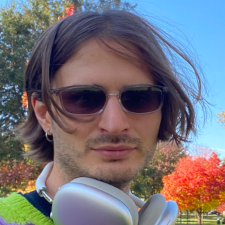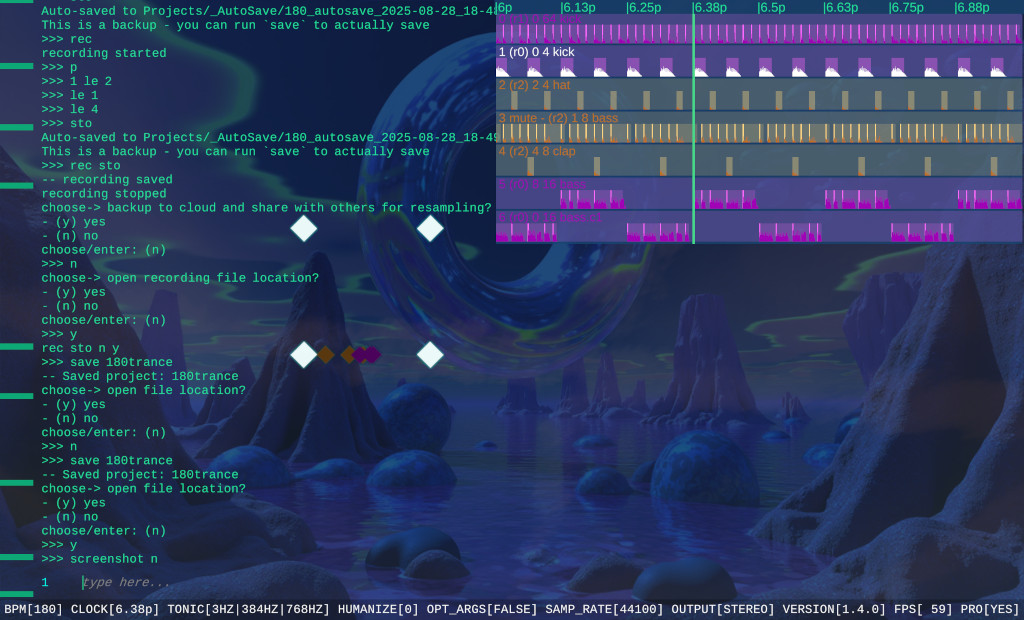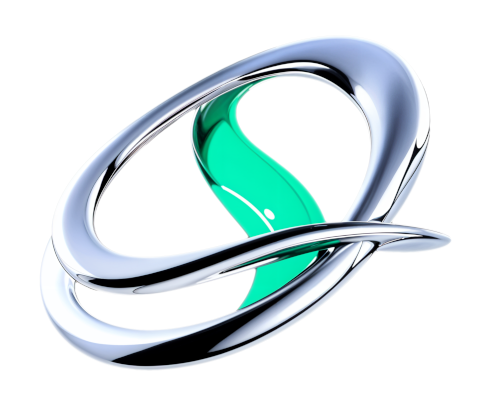- Published on
Strudel vs Tidal Cycles vs Sonic Pi vs Chuck vs Beat DJ: Which Live Coding System Fits Your Flow?
- Authors

- Name
- Nes Croft
- @nescroft
Strudel vs Tidal Cycles vs Sonic Pi vs Chuck vs Beat DJ: Which Live Coding System Fits Your Flow?
 Beat DJ Screenshot
Beat DJ ScreenshotLive coding has opened up entirely new ways to create and perform music, turning code into an instrument and algorithms into art. But with different systems taking vastly different approaches, choosing one can feel overwhelming. Let's break down five powerful options: Strudel, Tidal Cycles, Sonic Pi, Chuck, and Soniare's Beat DJ, each offering its own philosophy on how code should become music.
Tidal Cycles: The Haskell-Powered Pattern Pioneer
Tidal Cycles is the grandfather of modern live coding, created by Alex McLean (who also coined the term "algorave"). Built on the functional programming language Haskell and using SuperCollider for sound generation, Tidal approaches music as infinite cycles of patterns that can be combined, transformed, and manipulated in real-time.
What makes Tidal special is its mathematical elegance. Patterns aren't just sequences of notes - they're recipes for creating infinitely repeating cycles. You can layer polyrhythms, apply transformations like reversals or delays, and combine patterns in ways that feel both logical and surprising. The system's mini-notation lets you express complex polyrhythmic sequences efficiently, while its functional nature means you can write your own pattern-generating functions on the fly.
The learning curve is steep though. You need to install both Haskell and SuperCollider, understand functional programming concepts, and work within a text editor that sends code to separate applications. But for those who click with it, Tidal offers unmatched depth for algorithmic composition and has inspired countless algorave performances worldwide.
Strudel: Tidal's Browser-Based Sibling
Strudel is essentially Tidal Cycles reimagined for the web. Born from a collaboration between Alex McLean and Felix Roos in 2022, it faithfully ports Tidal's pattern language to JavaScript, making it accessible through any web browser with no installation required.
The genius of Strudel is its accessibility. You can jump into live coding immediately at strudel.cc, experiment with patterns, and share your creations with a simple URL. It maintains Tidal's powerful pattern manipulation capabilities while using Web Audio API and Tone.js for sound generation, meaning everything happens right in your browser although typically you will want to route your MIDI signals to another DAW to access more advanced sound design capabilities.
Strudel democratizes algorithmic music creation. You don't need to understand Haskell or wrestle with complex installations - just open a browser tab and start coding music. It's perfect for education, experimentation, and sharing ideas quickly. The trade-off is some limitations compared to the full Tidal ecosystem, but for most users, Strudel provides all the pattern power they need with dramatically lower barriers to entry.
Sonic Pi: Live Coding for Musicians and Educators
Sonic Pi, created by Sam Aaron at the University of Cambridge, was designed to teach programming through music but quickly grew into a powerful live performance tool. Built on Ruby and using SuperCollider for synthesis, Sonic Pi emphasizes approachability without sacrificing creative depth.
Its syntax is simple and readable, making it ideal for beginners, classrooms, and workshops. At the same time, it includes advanced features like sample manipulation, MIDI/OSC support, and synchronization with external gear. Sonic Pi is widely used in education but also by professional artists for performances thanks to its balance of simplicity and power.
Where Tidal focuses on patterns and Strudel on browser accessibility, Sonic Pi focuses on readability and fun. Its tight integration of sound synthesis, effects, and live loops makes it approachable for those who want to focus on musicality first and code complexity second.
Chuck: The Time-Traveling Audio Language
Chuck (often stylized as ChucK) is a strongly-timed audio programming language created by Ge Wang and Perry Cook at Princeton. Unlike pattern-oriented systems, Chuck was designed as a general-purpose audio language with precise control over timing and concurrency, making it ideal for both live coding and experimental sound research.
Its key innovation is “strongly-timed” semantics: time in Chuck advances explicitly when you tell it to. This gives you sample-accurate scheduling and deterministic control over concurrent processes, something few other live coding environments match. Chuck also powers the PLOrk (Princeton Laptop Orchestra) and has been widely used in academic and performance contexts.
Chuck is more low-level than Sonic Pi or Tidal. Instead of focusing on patterns or loops, you directly manipulate oscillators, synthesis algorithms, and timing. This makes it powerful for custom instrument design, algorithmic experimentation, and performances where precision and flexibility are key. It also has an active community and extensions like miniAudicle for interactive coding.
Beat DJ: The Command-Line Performance Machine
While Strudel, Tidal, Sonic Pi, and Chuck each focus on different coding paradigms, Soniare's Beat DJ takes a completely different approach. Instead of describing patterns mathematically or working with explicit synthesis code, Beat DJ treats music creation as a conversation with a command-line interface designed specifically for live performance.
Beat DJ is microtonal by default, automatically organizing sounds into exotic scales that sync with your tempo. When you load samples, they're automatically pitch-shifted and chopped to fit your current scale and BPM - no manual work required. The command-line interface means you can access any function or sound with just a few keystrokes, making impromptu performances feel effortless.
What sets Beat DJ apart is its DJ-like workflow. You can preview sounds in headphones before sending them to the audience, just like cueing tracks. The timeline is infinite - everything loops forever, letting you stay in flow state without constantly stopping and starting. Add in multiplayer jamming, AI assistance for learning, built-in visuals for live shows, and automatic mixing that balances frequencies, and you have a system built from the ground up for live performance.
Beat DJ also includes Ableton Link support for syncing with other devices, and its multiplayer mode lets friends join your sessions remotely - perfect for collaborative performances or online jams.
The Philosophy Behind Each System
These systems represent fundamentally different approaches to live coding:
Tidal Cycles treats music as mathematical patterns that can be combined and transformed. It's pure and elegant, appealing to those who love the intersection of math and music. The pattern language is incredibly deep, and the functional programming paradigm opens up endless possibilities for algorithmic composition.
Strudel maintains Tidal's pattern-centric approach but prioritizes accessibility. It's about bringing the power of algorithmic patterns to anyone with a web browser, no technical barriers required. Perfect for educators, experimenters, and those who want to dive into live coding without setup friction.
Sonic Pi emphasizes approachability and musical playfulness. Its Ruby syntax, built-in synthesis, and live loops make it a great choice for educators, beginners, and performers who want an immediate and fun way into coding music.
Chuck focuses on precision and flexibility. Its strongly-timed semantics give it unmatched control over time and concurrency, making it ideal for experimental performance, research, and custom instrument design.
Beat DJ focuses on performance and flow state. Instead of describing patterns or instruments, you're having a real-time conversation with your music through commands. You might adjust the dynamics with hat dyn or change the melody with synth mel It's less about mathematical elegance and more about an intuitive musical language and improvised creation that feels like playing an instrument.
Which System Fits Your Style?
Choose Tidal Cycles if you love mathematical precision, want the deepest possible pattern manipulation capabilities, don't mind complex setup, and are excited by the intersection of functional programming and music.
Choose Strudel if you want Tidal's pattern power but need browser accessibility, are teaching or learning algorithmic music, want to share creations easily, or prefer minimal setup friction.
Choose Sonic Pi if you value readability and fun, want a smooth entry into live coding, need built-in synthesis and effects, or are focused on education and workshops.
Choose Chuck if you want precise control over timing and concurrency, enjoy low-level sound design, or want a language powerful enough for both laptop orchestras and experimental live coding.
Choose Beat DJ if you prioritize live performance, want microtonal capabilities built-in, prefer command-line workflows, need DJ-style cueing and previewing, or want collaborative features like multiplayer jamming and AI assistance.
The Bigger Picture
Rather than competing, these systems complement each other beautifully. Strudel and Tidal excel at algorithmic pattern creation - they're tools for exploring the mathematical beauty of music. Sonic Pi balances approachability with performance depth. Chuck offers low-level precision and a unique time-centric model. Beat DJ excels at intuitive performance and flow - it's a tool for being in the moment with your music.
The live coding ecosystem is richer because each system follows its own vision. Whether you're drawn to Haskell's functional elegance, JavaScript's accessibility, Ruby's readability, Chuck’s time-based precision, or a command-line built for performance, there's a path into algorithmic music creation that matches your style.
So maybe the question isn't "which system should I choose?" but "which musical conversation do I want to have?" With patterns, with browsers, with loops, with time, or with commands - each offers its own way to turn code into music and algorithms into art.
